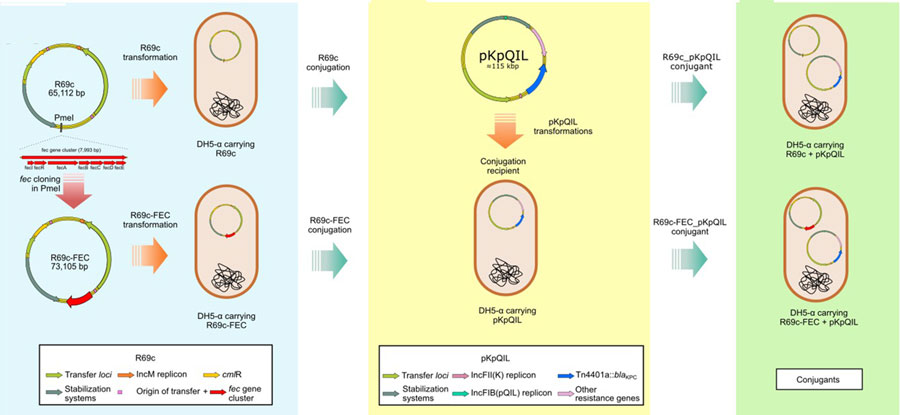Volume 31, Number 1—January 2025
Research
Cefiderocol Resistance Conferred by Plasmid-Located Ferric Citrate Transport System in KPC-Producing Klebsiella pneumoniae
Figure 1

Figure 1. Schematic representation of R69c and R69c-FEC conjugation in Escherichia coli DH5-α recipient carrying the pKpQIL plasmids R69c and R69c-FEC and pKpQIL major features in study of cefiderocol resistance conferred by plasmid-located ferric citrate transport system in KPC-producing Klebsiella pneumoniae. The left panel (blue) represents construction of the R69c and R69c-FEC donor vectors, both introduced by transformation in E. coli DH5-α chemically competent cells. The central panel (yellow) shows the pKpQIL transformation of E. coli DH5-α chemically competent cells with different pKpQIL natural plasmids extracted from K. pneumoniae strains. The right panel (green) represents the exconjugant pairs obtained by conjugation of the R69c vectors into the recipients carrying the different pKpQIL plasmids. FEC, ferric citrate transport system. KPC, Klebsiella pneumoniae carbapenemase.